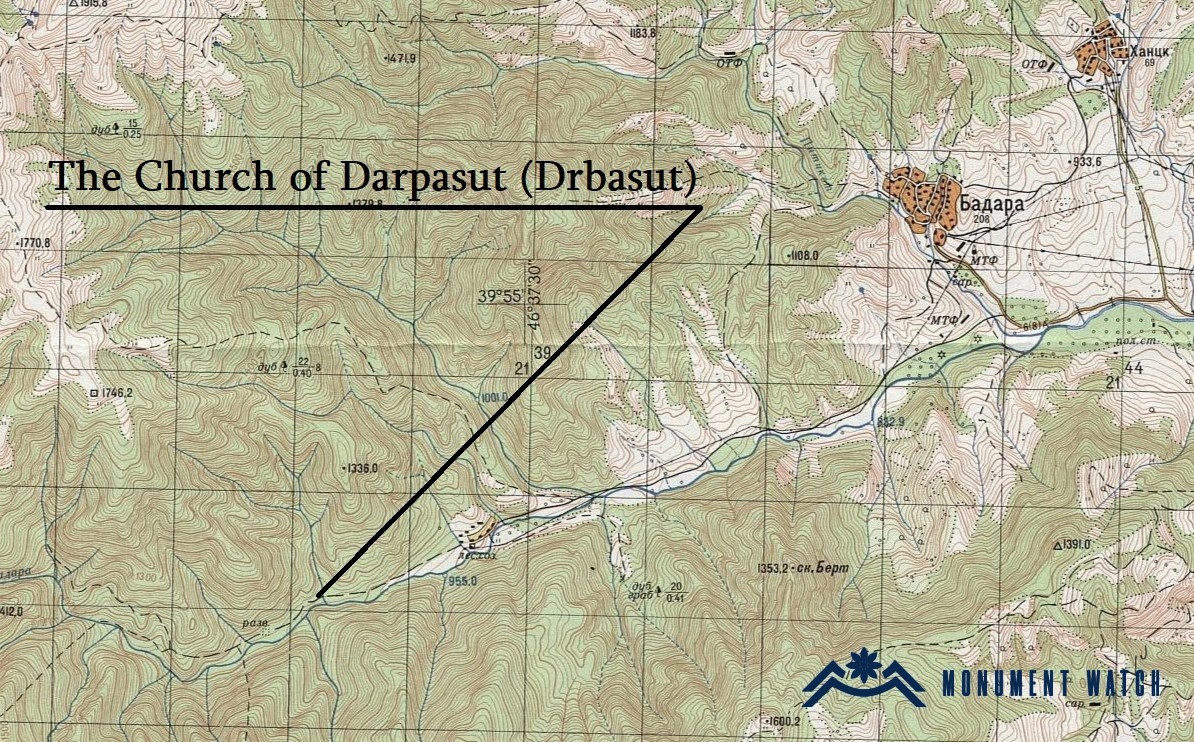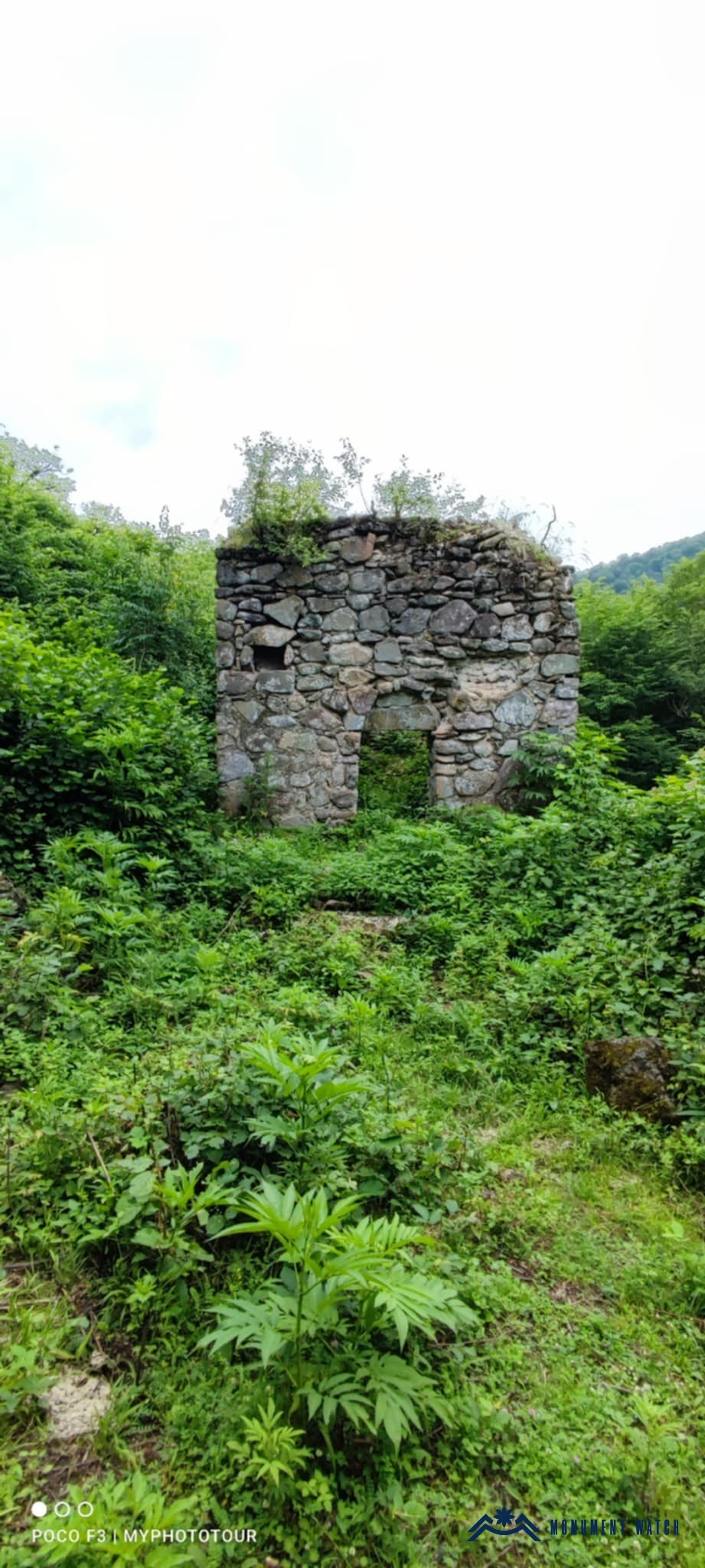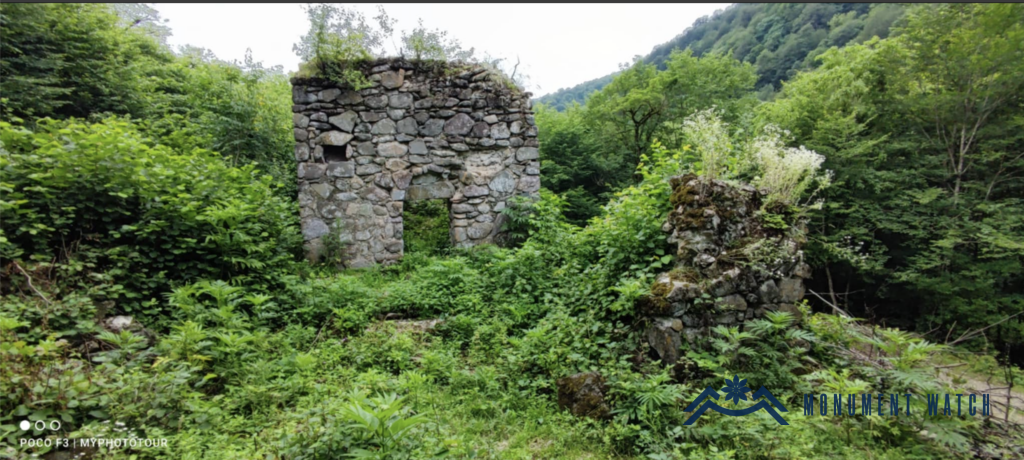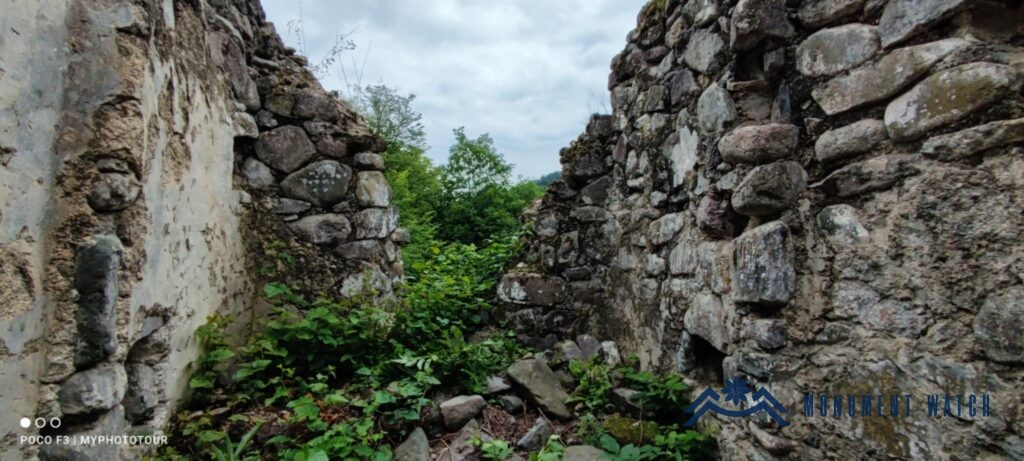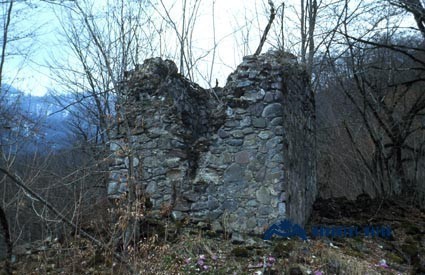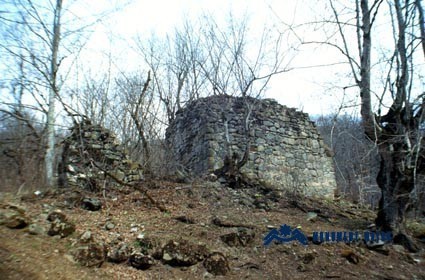The Church of Darpasut (Drbasut)
Location
The monument is located 6 kilometers southwest of the village of Patara in the Askeran region of the Republic of Artsakh, approximately 500 meters west of the settlement known as Lesnoy-established during the Soviet era-on the left bank of the Badara River (Fig. 1). It is currently under Azerbaijani occupation.
Historical overview
There is no historical information available about the church. Makar Barkhudaryants provides the following description of Darapas: "Above Surb Hovhannes, there are four stone-built chapels constructed close to one another; there is also a village site and a cemetery" (Barkhutareants 1895, 159).
The term "Darapas" is inscribed on the bema of the Church of Surb Amenaprkich in Patara, located nearby. This inscription was first published by Makar Barkhudaryants (Barkhutreants 1895, 157) and was later republished, with slight modifications, in the volume of the Corpus of Armenian lithography dedicated to Artsakh. "In the name of... we have painted the mansion of our church...The elders of Ukhan. They gave me during the eight days of the Resurrection (Easter) the gifts of bread and salt. And from Easter onwards, on the new Sunday, they will perform the liturgy for us. The mansion of Vachar, and the houses of Hurrahoa, belong to our church" (CAE 5, 142, Karapetyan 1984, 83-84). The term "Vachar" appears in the inscription, encountered several times in other medieval inscriptions of Artsakh. Two settlements named Vachar existed in Artsakh: Karvachar and Harva Vachar (Petrosyan 2019, 11-12), both commercial centers.It is plausible that our inscription refers to Harva Vacahar or another merchant settlement near the monastery, whose houses were donated to the monastery.
Another significant term mentioned in the inscription is "darapas". It is known that in medieval Armenia, princely mansions were called darabas or darapas. The ruins of the Khachen princely mansion also bore the name Darpasner (Ghulyan 1984, 51-53). According to Shahen Mkrtchyan, these areas served as administrative and spiritual centers for the Khachen principality in the second half of the 13th century (Mkrtchyan 1985, 159-160).
Architectural-compositional examination
It is a small, single-nave vaulted church in layout. The walls are constructed from unworked and semi-worked stones of various sizes, bound with lime mortar. They measure 74 cm in thickness. The church itself measures 6.5×4.5×4.6 meters. Its only entrance is on the western side, where a ruined structure-originally serving as the gavit-is attached (Fig. 2). The gavit measures 5.3×7.6 meters. The church entrance is arched, and the interior walls are plastered. The tabernacle is rectangular with small, square windows, and it is separated from the main hall by semi-cylindrical columns (Figs. 3-5). Traces of other buildings are also visible in the surrounding area (Karapetyan 1984, 83-84).
The condition before and after the war
The church was in a ruined state, its roof had not survived, and there is no further information regarding its condition after the occupation.
Bibliography
- Barkhutareants 1895 - Barkhutareants M., Artsakh, Baku.
- CAE 5 - Corpus of Armenian Lithography, Issue 5, Artsakh, compiled by S. Barkhudaryan, Yerevan, 1982.
- Karapetyan 1984 - Karapetyan, S. (1984). Historical and architectural monuments of the Ptretsik Valley based on newly discovered inscriptions. Lraber Hasarakakan Gitutyunneri [Herald of Social Sciences], Yerevan, No. 8, pp. 75–86.
- Ghulyan 1984 - Ghulyan, A. (1984). The princely palace of Khachen. Lraber Hasarakakan Gitutyunneri [Herald of Social Sciences], Yerevan, No. 3, pp. 51–57.
- Mkrtchyan 1985 - Mkrtchyan, Sh. (1985). Historical and architectural monuments of Mountainous Karabakh. Yerevan.
- Petrosyan 2019 - Petrosyan, H. (2019). Main results of the archaeological research of the Surb Stepanos Monastery of Vachar and newly discovered inscriptions. In Sedrak Barkhudaryan 120: Collection of Scientific Articles, Yerevan, Gitutyun Publishing House, pp. 11–30.
The Church of Darpasut (Drbasut)
Artsakh
